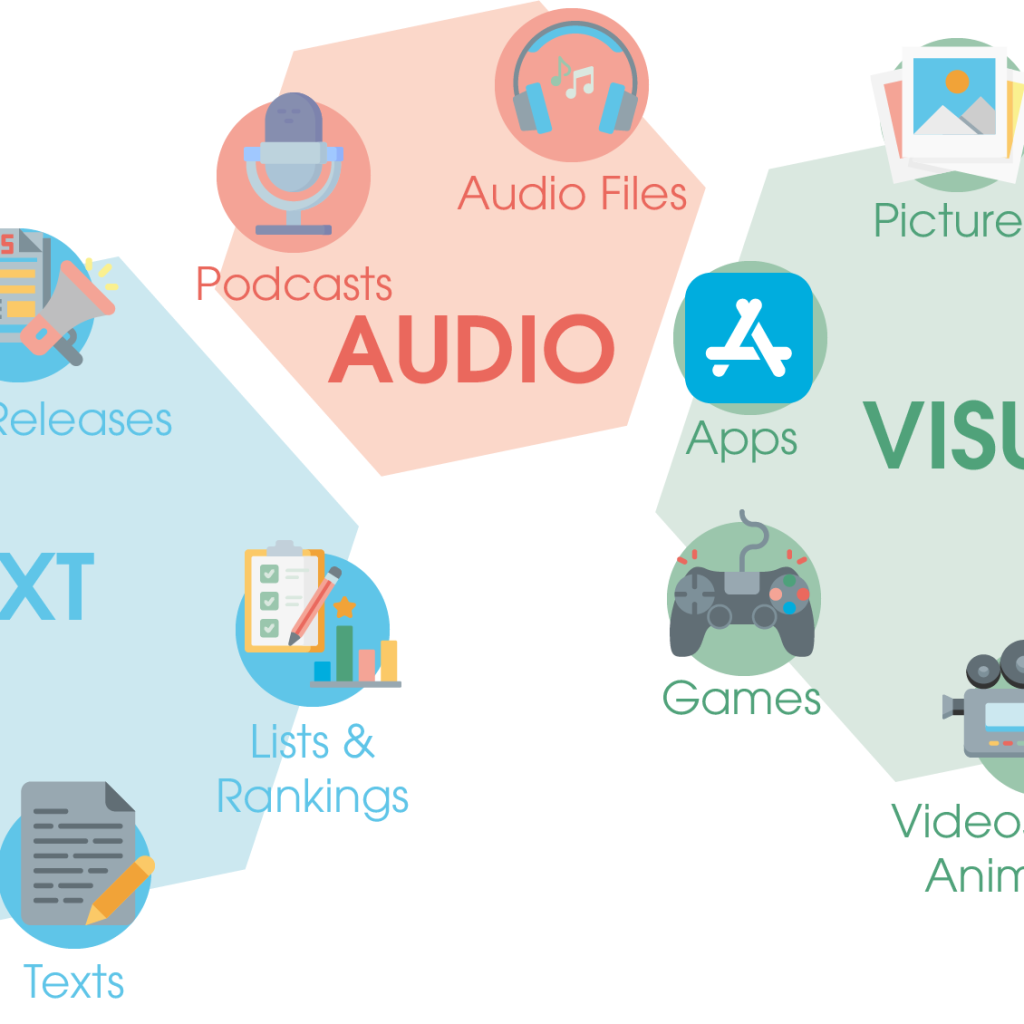A B2B content marketing strategy is created to bring you in front of your ideal clients and address their urgent problems, pique their interest, and encourage them to learn more about your company. To encourage your audience to work with you rather than your rivals, your content should evoke a sense of reciprocity. Your content strategy is crucial because it has the potential to help you stand out from your competitors and obtain cheap, organic leads. A thorough understanding of your target audience must be the foundation of your strategy.
We’ll look at a 5-step process for developing your B2B content marketing strategy in this post.
Components of a successful B2B content marketing plan
What distinguishes the top B2B content marketing teams from competing businesses? The ability to target potential customers directly, generate leads efficiently, and maximise the reach and revenue-generating potential of each piece of content are what distinguish truly advanced content marketing.
Content marketing that is cutting-edge and successful looks like this:
Complete coordination between the intended audience for the content and the intended target market.
- Senior leaders, the product team, and the sales team participated in the content as needed to provide strategic direction and subject matter expertise.
- In the form of comments, focus groups, surveys, and content engagement, clients and the people they want to reach can give feedback.
- measurement KPIs and goal tracking on a monthly, quarterly, and annual basis.
Five steps to creating a comprehensive B2B content marketing plan
1. Create buyer personas
Construct buyer personas It’s critical to comprehend your target audience before you begin producing content. The best way to accomplish this is by developing buyer personas. A buyer persona is “a semi-fictional representation of your ideal customer based on market research and real data about your existing customers,” according to HubSpot. You should include details like demographics, industry, job role, goals, challenges, decision-making factors, where they go for information, and more when creating buyer personas. There are numerous reasons to develop buyer personas for your company, including:
- Your marketing and sales strategies are influenced by them.
- They aid in improving the comprehension of your prospects and customers.
- Your messaging, content, product development, and services can more easily be tailored to the unique requirements, objectives, pain points, and behaviors of your ideal clients.
- They facilitate alignment within your organization regarding your target audience.

2. Create a buyer’s journey map
Diagram the buying process Knowing what your prospects are looking for and what questions they have is essential to the success of your content because the majority of B2B buyers conduct more than half of their research online before contacting a company’s sales team. This is where buyer’s journey mapping comes into play. By adding a new layer to your buyer personas by mapping the buyer’s journey, you can better match your content to the concerns prospects have at each stage of the process: awareness, consideration, and decision.

A buyer’s needs and questions change as they progress through each stage of the buying process. A sound content strategy lays out a plan for how you’ll address questions at each stage of the buyer’s journey. However, you don’t want a successful content strategy. You desire a superior one. To achieve that, combine your understanding of your most crucial buyer persona(s) with your understanding of their buyer’s journey. By doing this, you can ensure that you’re always talking to the right people and giving them all the information they need to feel comfortable and confident in your company, increasing the likelihood that they’ll purchase from you.
3. Choose the voice and tone of your brand
Every successful brand has its distinct personality and style. Take Buffer, MailChimp, and HubSpot as examples. Although all of these businesses compete in the same market, each one has a unique approach to content marketing. And voice and tone are the foundation for developing this enduring, distinctive style. The foundation of your brand’s personality is voice and tone. Because consistency is memorable, you should constantly work on developing a strong voice and tone. You can build a strong, enduring brand that resonates with your audience by using voice and tone. Let’s define voice and tone before continuing:
Voice: This is the adjective-based representation of your brand personality; these are the qualities that your ideal client uses to describe you. Is your company witty? Serious? Irreverent? Warm? Edgy? The voice used in all of your marketing should be consistent.
Tone: This is how a piece of content carries the voice and personality of your brand. The buyer persona you are targeting, the type of content you are producing, or the message you are delivering can all affect tone, which is dynamic, unlike a voice. You might use a different tone when writing a how-to guide for a small business than when writing a data sheet for an enterprise-level prospect, for instance, if you provide retail payment gateway services.
Also Read: What are the Best Ways to Promote a YouTube Channel
4. Produce content with multiple levels of depth
If you’ve been following the development of content marketing, this next strategy shouldn’t be news to you. But even if you have experience with B2B content marketing, it’s important to define what it means to produce interesting content with a variety of layers. Consequently, the question of what multi-layered content looks like arises. The best content will typically combine elements of both text-based and visual content to produce the most engaging experience. I like to divide it into three groups:
- Text
- Images
- Video

Numerous statistics demonstrate how effective adding a straightforward infographic to your text-based content can be. We then enter the world of video from there. The reality of digital media marketing is that if you can incorporate any type of compelling video into it, your content will become much stronger as a result. No matter which category it belongs to, the content should always be valuable. You should try this for two reasons:
- It’s a great way to engage audience members who aren’t big readers, and
- It’s an even better way to break up the monotony of long passages of text.
5. Carry out a content analysis
Conducting a content audit, or taking a close look at the content you’ve already produced, is a crucial but frequently skipped step in developing your content marketing strategy. It is frequently tempting to omit this action. Why, after all, do you even need to look at the content on your site right now? Isn’t everything just a thing of the past? Not exactly.
You can avoid having duplicate content on your website by analysing your current content to find gaps in the types of content you produce and the topics you cover.
Analysis of your current content also enables you to learn what is working and what your audience is responding to. You could now take a few hours to browse your website, read some content, and form opinions based on what caught your attention. However, a haphazardly organised content audit won’t give you the whole story. You must evaluate each page of your website using a set of common metrics if you want to truly understand the calibre of the content there.
The four fundamental steps for carrying out a content audit are as follows:
1. Make a list of the content you already have.
Take an inventory of the current content on your website to begin your content audit. If you have a small site, you can do this manually, or you can use a programme like
2. Sort and categorise your content.
After compiling a list of all the URLs on your website, you must describe the current content using the following standards:
- Topic
- Length
- Buyer’s Journey
- Relevance
- SEO
- Visual content
3.Include success indicators
Depending on the objectives you have set for your content strategy, you will want to measure a variety of metrics, but to get started, consider the following:
- Page views
- Time spent on the page
- Social shares
- Conversions
4. Examine the information for trends and gaps.
Remember to also note the gaps in your content. You may find that most of your content is relevant to the awareness stage of the buyer’s journey and that there isn’t much content for the consideration or decision stages. Or you might discover that you don’t have much content on particular subjects.
Also Read:2023 Oscars: The 5 Indian Films in the Running for the Most Coveted Prize
Conclusion
B2B content marketing poses a variety of particular difficulties in terms of both promotion and creation. There is no avoiding the fact that you have a challenging road ahead of you. Happily, there are a few things you can do to simplify the procedure as much as you can. Make sure that rather than simply barraging your audience with self-promotion, you are using your content to tell engaging stories. Realize the value of the user experience and the opportunity for brand loyalty that your content marketing initiatives present. Work together with other companies and welcome guest posts as the wonderful marketing tool they are. Make sure your content has depth by combining excellent copy with potent visuals. Track metrics and develop data-driven content creation skills to make sure your marketing initiatives are successful over time. If you can accomplish all of this, there’s a good chance you’ll be able to connect the B2B content marketing puzzle pieces and produce something that has real lasting value.
















